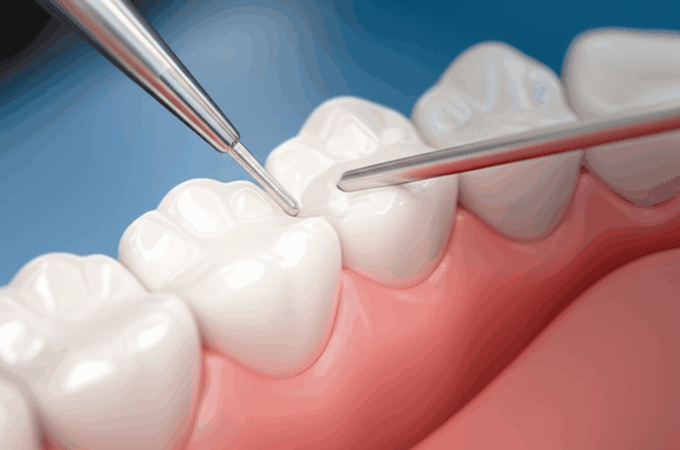Dental sealants represent a simple yet incredibly effective method for safeguarding your teeth against the relentless threat of cavities. These thin, protective coatings are painted onto the chewing surfaces of your back teeth – molars and premolars – forming a smooth barrier that effectively seals out food particles and plaque. In a world where maintaining oral hygiene is paramount, understanding the power of dental sealants can be a game-changer in preventing tooth decay, particularly for individuals who find brushing the intricate grooves of their molars a challenge.
The battle against cavities is a constant one, waged daily with toothbrushes and floss. However, even with diligent brushing, the deep pits and fissures on the occlusal (chewing) surfaces of our posterior teeth can harbor bacteria and food debris, creating an ideal environment for acid production and subsequent enamel erosion. This is precisely where dental sealants shine. Applied by a dental professional, these specialized plastic coatings flow into these microscopic crevices, effectively creating a smooth, impenetrable shield.
Understanding the Mechanism of Dental Sealants
At their core, dental sealants are made of a composite resin material, similar to what is used in many tooth-colored fillings. The application process is remarkably straightforward and pain-free. First, the dentist or dental hygienist will thoroughly clean and dry the tooth. Then, a mild etching solution is applied to the enamel surface for a short period. This etching process creates a slightly rougher texture, allowing the sealant material to bond more effectively. Once the tooth is rinsed and dried again, the liquid sealant is painted onto the chewing surfaces. A special curing light is then used to harden the sealant, creating a durable, protective layer. The entire procedure typically takes only a few minutes per tooth.
There are generally two types of dental sealants: those that are light-cured and those that are self-cured. Light-cured sealants harden rapidly when exposed to a specific wavelength of light, offering immediate protection. Self-cured sealants, on the other hand, harden chemically over a short period without the need for a curing light. Both types are highly effective in preventing cavities.
Who Benefits Most from Dental Sealants?
While anyone can benefit from the cavity-preventive power of dental sealants, certain groups are particularly good candidates. Children and teenagers are often prime recipients. As soon as their permanent molars begin to erupt, typically around age six for the first molars and age twelve for the second molars, the chewing surfaces can be sealed. This is a critical window of opportunity to protect these newly emerged teeth, which are still developing and can be more susceptible to decay. The deep grooves in children’s molars are notoriously difficult to clean effectively with a toothbrush, making them prime targets for cavities.
Adults can also benefit significantly from dental sealants, especially if they have a history of significant tooth decay or if their permanent molars have deep, hard-to-reach fissures. For individuals who struggle with fine motor skills, or those with conditions that make maintaining optimal oral hygiene challenging, sealants can provide an invaluable layer of defense. Moreover, if a dentist identifies existing decay that is very superficial and hasn’t reached the dentin (the layer beneath enamel), a sealant might be applied over this area to “seal in” the early decay and prevent it from progressing.
The Long-Term Value of Dental Sealants
The protective benefits of dental sealants can last for many years, often up to a decade, with proper care. While sealants themselves do not eradicate the need for regular brushing and flossing – these remain fundamental to overall oral health – they significantly reduce the likelihood of cavities forming on the sealed surfaces. Regular dental check-ups are essential to monitor the integrity of the sealant. Over time, some wear and tear can occur, and a dentist can easily repair or reapply the sealant to ensure continuous protection.
Investing in dental sealants is a proactive approach to oral health that can save a significant amount of discomfort, time, and money in the long run. The cost of applying sealants is considerably less than the cost of treating cavities, which often involve fillings, and in more severe cases, root canals or even tooth extractions. By taking this simple preventive measure, individuals can significantly reduce their risk of needing more extensive and costly dental procedures.
In essence, dental sealants offer effortless cavity prevention by creating a smooth, protective barrier over vulnerable tooth surfaces. They are a painless, quick, and highly effective tool in the arsenal of modern dentistry, empowering individuals of all ages to maintain healthier smiles and avoid the pain and expense associated with tooth decay. Discussing the option of dental sealants with your dentist during your next check-up is a wise step towards ensuring a lifetime of strong, healthy teeth.



